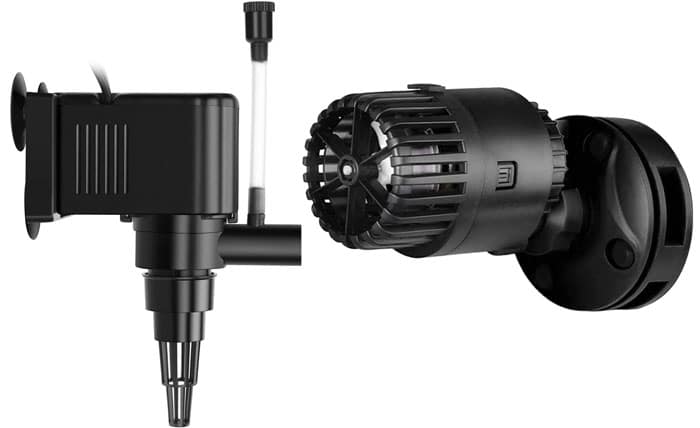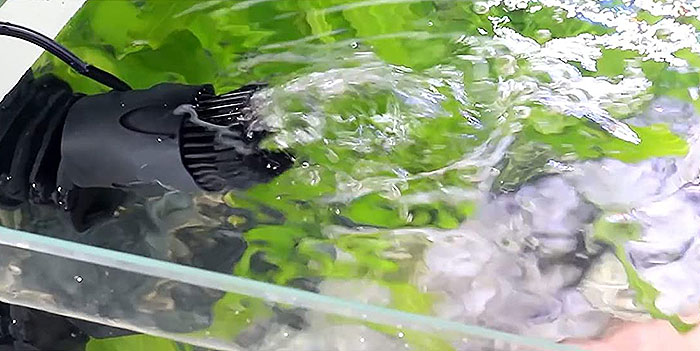Taking care of your fish entails satisfying certain conditions that imitate real-life water parameters. While choosing a suitable device for their fish tank, many people wonder, “What’s the difference between a wavemaker and a powerhead?”
In a nutshell, a wavemaker generates waves like ocean waves, while a powerhead does not. Therefore, wavemakers are used in aquariums to create water movement, whilst powerheads are used to circulate water.
Both have their distinct benefits as an addition to your fish tank, so it’s critical to understand the distinction between the two before choosing a choice.
What are Wavemaker vs Powerhead and how do they work?

- Wavemakers, also known as wave-making pumps or displacement pumps, are devices installed inside an aquarium to generate waves.
- They create water movement by oscillating back and forth at high speed, which causes the water’s surface to ripple.
- Wavemakers are used to break up stagnant spots in aquariums, and they can help simulate currents found in nature.
- The wavemaker’s mechanism is rather straightforward. It functions like an underwater fan, constantly moving the water in the aquarium.
- Wavemakers use an impeller to create water movement. And, the impeller is powered by a motor that turns the blades.
- The blades spin and create a vortex that pulls water from one side of the tank and pushes it to the other side. This action creates waves on the surface of the water.
- Wavemakers are a great option for aquarium hobbyists who want to create movement in their tanks. This device is commonly used in reef aquaria.
- Powerheads are devices that circulate water and provide oxygen to the fish tank. They use an impeller to circulate water but do not create waves like its variable-voltage system (the wavemaker) does.
- The powerhead draws water up through the bottom entry and propels it across the aquarium.
- The powerhead contains a compact centrifugal pump powered by AC, featuring an intake and output that transport water from the lower to a higher level in the fish tank.
- This movement can be used to create currents at the bottom of an aquarium, simulate natural habitats with strong or weak currents, or circulate water around large rocks.
- Unlike wavemakers, however, powerheads do not produce any ripples on the water’s surface once they’re turned on.
- Many types of corals need strong currents for proper growth, so powerheads are often used to create these types of conditions in an aquarium.
- The most common type of powerhead is the submersible pump. Submersible pumps are placed inside the aquarium and connected to an external power source. The pump creates water movement by drawing water in from one side of the aquarium and pushing it out through the other side.
Wavemaker and Powerhead: Advantages and Uses

1. When Using a Powerhead
- Generate oxygen and maintain water circulation in the fish tank.
- More effective than airstones
- Prevent tank debris and detritus from settling in the aquarium’s bottom, thus allowing them to be removed by the filter.
- Feed the fish and other aquarium creatures.
- Create varied current strengths for the tank’s various creatures.
- Give the fish some exercise.
2. When Using a Wave Marker
- Increase the overall water quality in the fish tank
- Provide water circulation, thus calming the fish down, especially aggressive ones
- Create large wave, thus moving the water around gently for a large tank
- Moves nutrients and food for corals and fish in the tank
- Usable with mix saltwater tank
- Bring up detritus and waste to the tank filter
Wavemaker vs Powerhead Comparison

1. Flow Patterns
A powerhead generates a more powerful and directed flow, resulting in stronger currents than a wavemaker.
The wave maker, on the other hand, generates waves that are large and soft, making it much safer and more efficient for a large tank.
2. Power Requirements
Wavemakers typically use less power than powerheads. This makes them more energy-efficient and cheaper to operate in the long term.
However, wavemakers are also relatively expensive compared to other types of pumps, and they require a controller that is typically sold separately.
Conclusion
While both the wavemaker and powerhead have their distinct benefits, it comes down to what type of aquarium you have and specific requirements.
You will want a powerhead for fish that requires a strong current to swim and exercise. Meanwhile, a wavemaker is much gentler, ideal for peaceful fish that requires soft waves mimicking the ocean.
Learn more:




